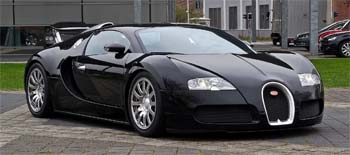A more recent term for high-performance sportscars is "hypercar", which is sometimes used to describe the highest performing supercars. An extension of "supercar", it too lacks a set definition. One offered by an automotive industry writer is "a limited-production, top-of-the-line supercar"; prices can reach or exceed US$1 million, and already had by 2017.
Some observers consider the tubular framed, first-ever production fuel-injection, world's fastest street-legal, 260 km/h (160 mph) 1954 Mercedes-Benz 300 SL "Gullwing" as the first hypercar; others the revolutionary, first-ever mid-engined 1967 Lamborghini Miura; others yet the 1993 McLaren F1 or 2005 Bugatti Veyron.
With a recent shift towards electrification, many recent hypercars use a hybrid drivetrain, a trend started in 2013 by the McLaren P1, Porsche 918 Spyder, and LaFerrari, then continued in 2016 with the Koenigsegg Regera, in 2017 with the Mercedes-AMG One, and the McLaren Speedtail.
Modern hypercars such as Pininfarina Battista, NIO EP9, Rimac Nevera, and Lotus Evija have also gone full-electric.
Hypercars have also been used as a base for the Le Mans Hypercar class after rule changes come into effect from 2021.
